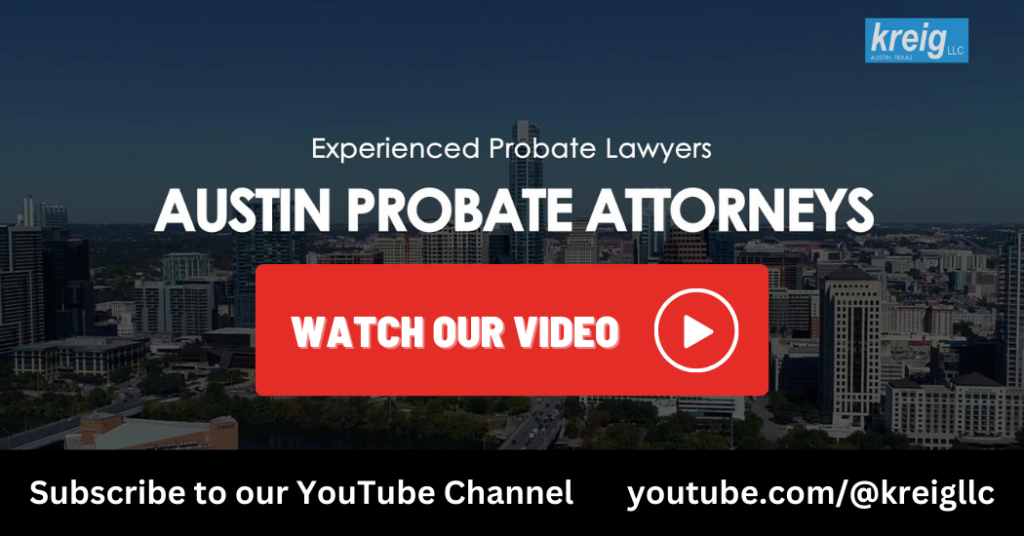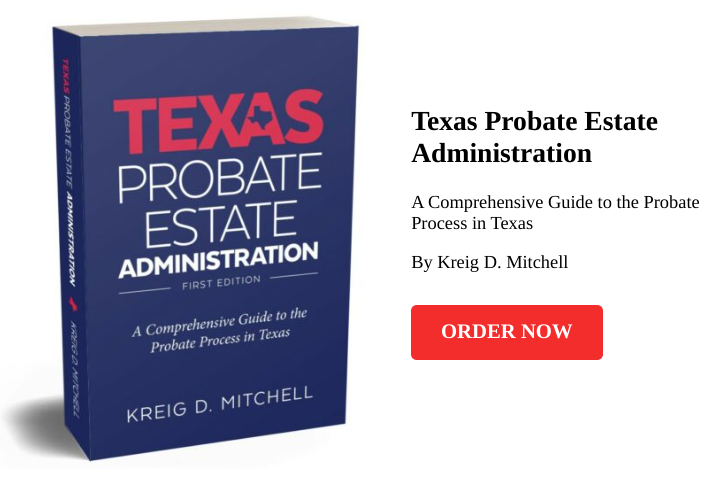A father executes a will leaving specific parcels of land to his children from a prior marriage. Over the following years, he exchanges those parcels with his sons through various property transactions. When he dies without updating his will, a dispute erupts. Do the children receive the land the father owned at his death, or do they receive nothing because the specific parcels mentioned in the will are gone?
This situation arises frequently in Texas estates, particularly in families with ranching or agricultural operations where property exchanges occur regularly. A testator may execute a well-crafted will devising specific property to beneficiaries. However, life continues after the will is signed. The testator may sell property, trade it, or consolidate holdings through exchanges with family members. Years may pass without the will being updated. When death occurs, beneficiaries discover that property specifically mentioned in the will no longer exists in the estate.
The legal doctrine that governs this scenario is called ademption. Does ademption automatically extinguish a beneficiary’s right to receive property under a will, or can beneficiaries claim substitute property the testator acquired? The case of Rogers v. Carter, 385 S.W.2d 563 (Tex. Civ. App.—San Antonio 1964, no writ), provides guidance on how Texas courts analyze ademption and illustrates the narrow circumstances under which beneficiaries can avoid its harsh consequences.
Facts & Procedural History
Jim died in 1959, at age 93. He left six children from his first marriage and his second wife Belle as beneficiaries under his will. His first wife Ida died intestate in 1913, leaving Jim and their six children as her sole heirs. Jim married Belle in 1920. They had no children, although Belle had a daughter from a prior marriage.
Jim executed his will on November 26, 1949. At that time, he owned an undivided one-half interest in Surveys 10 and 12, plus 440 acres of Survey 14 in Schleicher County. His son Melvin owned the other one-half interest in these properties. Jim also owned an undivided one-third interest in Surveys 9, 11, and 13 with two of his sons, Melvin and Merlin. All the even-numbered surveys were purchased before Jim’s first wife died, although the State School Fund was not paid in full until 1940. The odd-numbered surveys were acquired in 1926 by Jim and his sons Melvin and Merlin jointly while operating as partners in the livestock business.
The will’s second paragraph gave and bequeathed to the six children “all of my undivided one-half interest” in Surveys 10, 12, and 14, and “my undivided one-third interest” in Surveys 9, 11, and 13. The third paragraph gave Belle “all the rest and residue of my property, real, personal and mixed” in fee simple.
After executing the will, Jim engaged in property exchanges with his sons. On January 14, 1950, Jim and Melvin exchanged deeds. Jim conveyed his undivided one-half interest in Surveys 10, 12, and 14 to Melvin. In return, Melvin conveyed his one-third interest in Surveys 9, 11, and 13 to Jim. Melvin also assumed one-half of the Federal Land Bank indebtedness on the even-numbered surveys. Jim assumed one-third of the indebtedness on the odd-numbered surveys.
On April 15, 1957, Jim conveyed to his son Merlin all interest in Survey 9. In return, Merlin conveyed to Jim his undivided one-third interest in Surveys 11 and 13. Jim agreed to assume one-third of the Federal Land Bank indebtedness on these properties.
After these transactions, Jim no longer owned any interest in Surveys 9, 10, 12, and 14. However, he owned Surveys 11 and 13 in fee simple. In the probate litigation, the children argued they should receive the after-acquired interests in Surveys 11 and 13 under the will. The trial court ruled that the children received only the undivided one-third interest Jim owned when he executed the will. The remaining two-thirds interest in Surveys 11 and 13, which Jim acquired after executing the will, passed to Belle under the residuary clause. The children appealed.
Understanding Ademption in Texas Law
The term “ademption” describes the act by which a specific legacy becomes inoperative because of the disappearance of its subject matter from the testator’s estate during his lifetime. The general rule is that a specific legacy is adeemed if the thing given is disposed of by the testator during his lifetime. This rule is well-established in Texas law.
Consider how ademption works in practice. A grandmother executes a will leaving her diamond ring to her granddaughter. Several years later, the grandmother sells the ring to pay medical expenses. When the grandmother dies, the granddaughter receives nothing because the specific item devised no longer exists. The devise is adeemed. The granddaughter cannot claim the cash proceeds from the sale or demand another piece of jewelry of equivalent value.
The doctrine of ademption operates pro tanto, meaning it applies proportionally. If a testator devises specific property and then sells only part of it, the remainder passes to the beneficiary. The legacy is partially adeemed only to the extent the testator disposed of the property. This principle prevents an all-or-nothing result when testators make partial dispositions.
Ademption applies only to specific legacies. Understanding whether a devise is specific or general therefore becomes essential. A specific devise gives the beneficiary a particular, identifiable item of property. A general devise gives the beneficiary a stated amount to be paid from the general assets of the estate. The difference determines whether ademption can occur.
Specific Devises Versus Demonstrative Devises
The children in Rogers argued that the devise was demonstrative rather than specific. A demonstrative devise is a hybrid between specific and general devises. It directs payment of a stated sum from a particular source but allows payment from general estate assets if the specified source is insufficient. Demonstrative devises are not subject to ademption because they can be satisfied from other estate property.
The San Antonio Court of Appeals rejected this argument and held the devise was specific. The court applied the cardinal rule of construction that the testator’s intention must be ascertained from the four corners of the will, giving meaning to all parts if possible. The intention must be determined as of the time the testator executed the will.
The will bequeathed to the children definite interests in six designated surveys of land. It described these interests with precision: “all of my undivided one-half interest” in certain surveys and “my undivided one-third interest” in other surveys. The will then bequeathed all the remainder of the estate to Belle. This structure created specific devises of particular property interests.
The court cited Currie v. Scott, 144 Tex. 1, 187 S.W.2d 551 (1945), where the Texas Supreme Court addressed similar devises. In Currie, the court stated: “The testatrix undertook and intended by her will to invest the four petitioners with the ownership of definite and distinct undivided interests in the one-half interest owned by her in the oil, gas and other minerals in five sections and fractional sections of land in Glasscock County. These devises are gifts of parts of testatrix’ real property specifically and definitely described. A gift of a certain undivided interest in a definitely described tract or tracts of land is a specific devise.”
The precision with which the testator identified the property and described his exact interest demonstrated an intent to devise specific property rather than a general amount. The testator did not say “property equal in value to my interest in six surveys” or “sufficient property to give my children the value of certain surveys.” He identified exact fractional interests in specifically described land.
The Voluntary Partition Exception to Ademption
The children argued that ademption did not apply because the conveyances constituted voluntary partitions. A voluntary partition occurs when co-owners of property exchange their undivided interests for ownership in severalty of specific portions. If the testator merely converts an undivided interest into a divided interest through partition, some courts hold the specific devise is not adeemed because the testator still owns the same quantity and estate.
The leading case on this exception is Brady v. Paine, 391 Ill. 596, 63 N.E.2d 721 (1945). In that case, Brady’s will gave his daughter his undivided one-half interest in a described 80 acres. After executing the will, Brady and the owner of the other one-half interest exchanged quitclaim deeds. Brady then owned the south 40 acres in fee, and the other owner held the north 40 acres in fee. The Illinois Supreme Court held that ademption did not apply because Brady still owned the same quantity and estate after the partition. He owned one-half of the 80 acres before and after the partition. The only effect was to transfer his ownership from an undivided interest in the entire tract to ownership in severalty of half the tract.
The court in Brady reasoned that after a voluntary partition, the tenant holds title not under the deed from his cotenant but under his original title. Therefore, the testator acquired nothing through the partition. This reasoning prevents ademption because the testator continues to own what he owned when executing the will.
The Rogers court acknowledged this exception but found it inapplicable. To avoid ademption through voluntary partition, the testator must still own the same quantity and estate after the partition. This requirement could not be met in Rogers for several reasons.
Why the Transactions Were Not Voluntary Partitions
Jim Rogers owned less land after the exchanges than when he executed his will. At execution, he owned interests in six surveys. After the exchanges, he owned only two surveys. The transactions extending over seven years did not merely convert undivided interests into divided interests. They fundamentally changed which properties Jim owned.
The exchanges involved considerations beyond simple partition. Each party assumed new debt obligations as part of the transactions. In the 1950 exchange, Melvin assumed one-half of the Federal Land Bank indebtedness on the even-numbered surveys when he received Jim’s interest. Jim assumed one-third of the indebtedness on the odd-numbered surveys when he received Melvin’s interest. These debt assumptions constituted separate consideration moving between the parties.
The structure of the transactions demonstrated they were exchanges rather than partitions. In the 1950 transaction, only Jim and Melvin participated. Merlin, who was a cotenant of the odd-numbered surveys, had no part in that exchange. In the 1957 transaction, only Jim and Merlin participated. Melvin had no involvement. True voluntary partitions among cotenants typically involve all cotenants dividing the property among themselves. These selective exchanges between different pairs of cotenants resembled arms-length property swaps rather than coordinated partitions.
The timing and sequence of transactions also negated the voluntary partition theory. Seven years separated the two exchanges. The testator executed multiple deeds at different times with different sons. This pattern differed from a single partition transaction where cotenants simultaneously divide property among themselves.
The Takeaway
The Rogers decision shows the strict application of ademption doctrine in Texas when testators dispose of specifically devised property. A specific devise of identifiable property becomes inoperative if the testator no longer owns that property at death. Beneficiaries generally cannot claim substitute property the testator acquired unless that property clearly resulted from a simple voluntary partition where the testator converted an undivided interest into a divided interest of the same quantity and estate. Property exchanges involving additional consideration, debt assumptions, or only some cotenants do not qualify as voluntary partitions that avoid ademption. The exchanges must preserve the same quantity and estate in the same property for the partition exception to apply.
Do you need help with a probate matter in Austin or the surrounding area? We are Austin probate attorneys. We help clients navigate the probate process. Call today for a free confidential consultation, 512-273-7444.
Our Austin Probate Attorneys provide a full range of probate services to our clients, including helping with estate plans and gifting. Affordable rates, fixed fees, and payment plans are available. We provide step-by-step instructions, guidance, checklists, and more for completing the probate process. We have years of combined experience we can use to support and guide you with probate and estate matters. Call us today for a FREE attorney consultation.
Disclaimer
The content of this website is for informational purposes only and should not be construed as legal advice. The information presented may not apply to your situation and should not be acted upon without consulting a qualified probate attorney. We encourage you to seek the advice of a competent attorney with any legal questions you may have.




